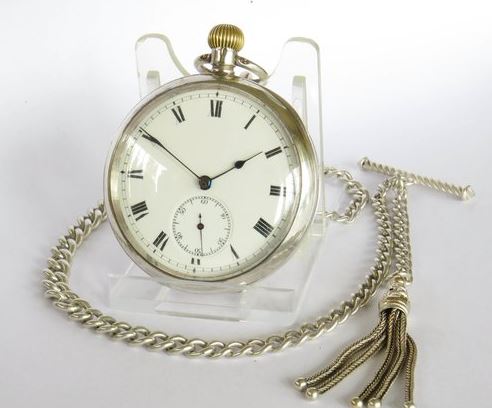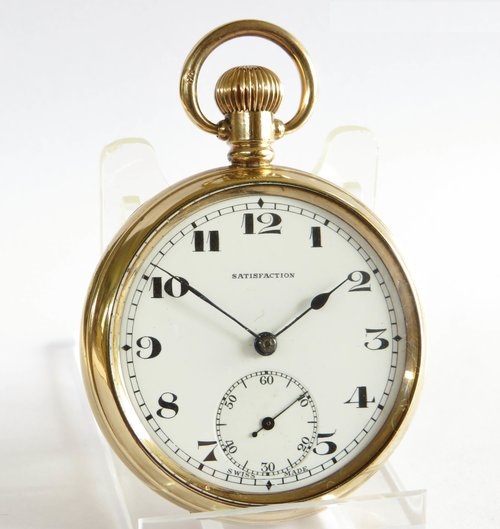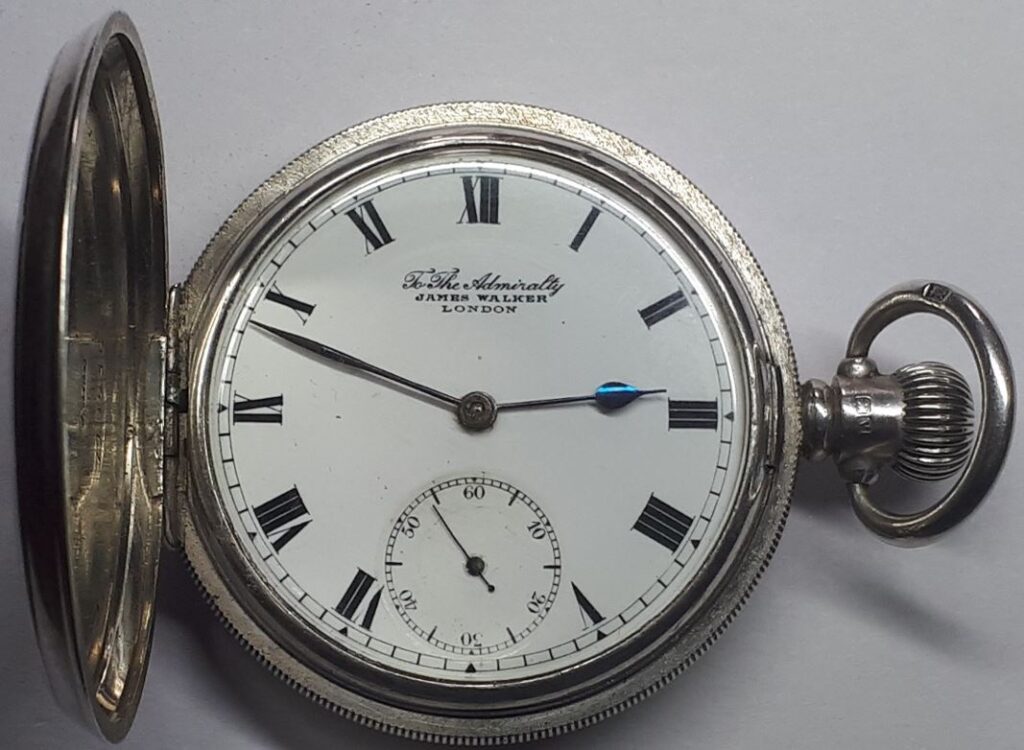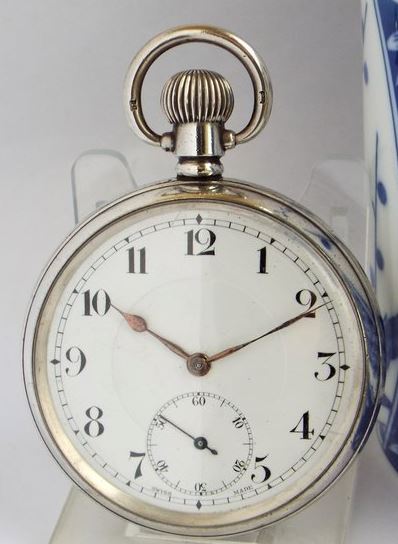Last updated on June 27, 2024
This is a beginner’s guide to antique pocket watches. It will cover the basic things you should be looking for when buying your first antique pocket watch.
A brief history of the pocket watch
The earliest pocket watches had evolved from spring-powered clocks, with the first examples appearing in the early 16th century. Early pocket watches were bulky and were generally worn on a chain around the neck. Originally, they were called clock watches or Nuremberg Eggs. Early watches only had an hour hand, the minute hand appearing in the late 17th century.
The waistcoat was introduced in England during the reign of Charles II during the Restoration (1660s). The waistcoat evolved to include a front pocket and watches began to be carried in the pocket. Subsequently, they were referred to as pocket watches and were often secured to the vest by a chain, later known as an Albert.
By the late 17th century, pocket watches had become very fashionable and were small enough to be worn in a pocket and not as a pendant. These early pocket watches were notoriously inaccurate, sometimes losing five or six hours a day. As impractical as they were, they did act as a symbol of wealth and status. The dials and cases were often made from precious metals with elaborate designs. At this time, pocket watches were a luxury item only worn by wealthy gentlemen.
Lever escapement
The issue of accuracy was improved considerably by the invention of the lever escapement. The first lever escapement was invented by English clockmaker Thomas Mudge in 1755. The lever escapement was further improved by Abraham-Louis Breguet (1787), Peter Litherland (1791), Edward Massey (1800), and George Savage (1800s). By the mid-19th century, lever escapements became the standard movement in all clocks and pocket watches.
By the late 1850s, pocket watches were being manufactured in America using mechanised production lines and standardised components. Pocket watches became affordable and were no longer exclusive to the wealthy and became an important feature in middle and lower-class society.
During the 1st World War trench watches were preferred as they were easier for soldiers to use in the trenches. In the post-war years, pocket watches slowly fell out of fashion. Pocket watches became popular again for a short time in the 1950s, being paired with the three-piece suit. Modern pocket watches are being made, but nothing beats the charm and character of a genuine antique pocket watch.
Types or styles of pocket watch
There are two main types of pocket watches, open-face and hunter case. As the name suggests, with an open-faced pocket watch the dial is uncovered and visible. The full hunter pocket watch features a solid outer lid protecting the watch face until opened. In a half hunter, the watch case features a crystal panel at the centre of the lid revealing a view of the watch hands.
What you need to know about buying a pocket watch
Over the centuries, millions of pocket watches were made and many of these still exist in good working order. Although some rare and complicated antique watches can cost enormous sums of money. However, typically antique pocket watches are not very expensive. However, it is still it is important to know what to look out for if you want to find an authentic, high-quality antique pocket watch that works. You need to know the manufacturer, age, size, quality and unique features of the antique watch to determine its true value. Once you know these details you search online auction results for similar watches to get an idea of a fair price.
The name on the dial or even on the movement can be misleading, particularly on those produced for the British market. Often this name is that of the retailer selling the watch rather than the actual watchmaker. The real manufacturer’s markings are often discretely hidden on the watch’s movement. Some watches will also include serial numbers which can be used to help date the watch. These are typically five to nine digits long.
Jewel count and case material
The jewel count for the watch movement is an important consideration. 7-jewel watches should generally be avoided as they are of lower quality and susceptible to wear and tear. A jewel count of 15 and above is considered to be of mid or higher quality. In the late 19th century 15 jewels were considered the standard for a “fully jewelled watch”.
The case material can also be used to date an antique pocket watch. If it is made of gold or silver and was assayed in Britain, it will include date hallmarks that can be used to determine the age. Note, that this is based on the assumption that the watch case and the movement started their lives together. Often the watch cases were scrapped for their precious metal and the movement was re-cased in a cheaper material.
Originality and accuracy
Originality is also a major factor in determining value. Most collectors will shy away from a timepiece if it appears to be damaged or contains unoriginal replacement parts. Damage is very much different to patina, which is a thin surface layer that develops on something because of use, age, or exposure. Personalised engravings will also detract from the value of a watch, but may add sentimental value if it’s a family heirloom. It is worth noting that on the inside of the case, it is common to find markings from watchmakers that indicate dates of service, this is perfectly acceptable.
Accuracy is also an important factor in determining price, particularly if the watch is to be used as a practical timepiece. Always, ask for an accuracy test before buying. This should be over at least one 24-hour period, but preferably over seven days. The seller should be able to advise of the accuracy and the power reserve of the watch. Ideally, I look for watches that have at least 24 hours of power reserve and have an accuracy of +/1 one minute per day.
Related content
5 things you should know before purchasing an antique watch.
Pocket watch at Wikipedia.





This a really helpful guide, I was looking at buying an antique pocket watch as a wedding gift for my nephew to wear on his big day. This was really useful. I managed to get him a silver Longines pocket watch dating to 1913. It has a Longines calibre 19.75N movement and keeps good time. I followed your advice and got it for a reasonable price. Thanks for the post, Ian.
Hi Ian, the Longines calibre 19.75N is a good quality 15-jewel movement with a bimetallic screw balance and a Breguet hairspring. You have done well, hopefully, you got a nice Albert chain to go with it. Here is a guide on how to wear an antique pocket watch. I am sure your nephew will appreciate the Longines antique pocket watch and it will be a nice addition to his outfit on the big day. Thanks for commenting, Jason
Hi Jason,
I have an old hunter pocket watch which has two buttons to the right of the winder, the larger one rings the hour, but I’m not sure what the smaller one is for. Can you help? The face has a separate second circle and another numbered up to 30, which I guess is the calendar of perhaps another timer?
It is Victorian, imported by George Stockwell if I am reading the marks correctly.
Regards
Hi Don,
Without any further information, at best guess you have an antique hunter pocket watch with repeater and chronograph complications. A repeater is a complication in a mechanical watch that chimes the time on demand by activating a push or a slide-piece. A chronograph is simply a stopwatch used to measure periods of time. In this instance, it appears that it has a 30 minute register. George Stockwell first registered as an assay agent in London in 1907, so the watch will date from this period onwards. I hope this helps. Thanks for taking the time to comment at Time Worn Watches, Jason